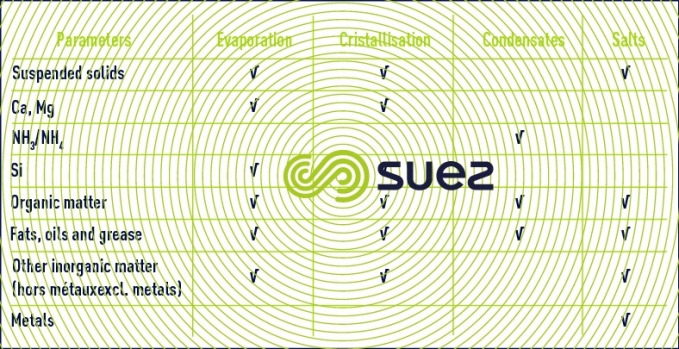main characteristics of effluent
Reading time:The spectrum of the types of effluent which may be treated by evaporation/crystallisation is very large in terms of origin and characteristics. They are mainly from reuse processes using membranes. Therefore “brine” is evaporated/crystallised, the concentration of dissolved solids of which, is a function of the upstream process, typically within a range of 10 to 10gr/l. The level of concentration will directly affect the combination of processed to be deployed. The ionic composition of brine as well as the conditions of operation of the crystallisation process will define the nature of the salts obtained.
Depending upon their level of concentration, the other compounds present in the brine will have a more or less significant impact on the quality of condensates, the purity of salts and the operating conditions of the evaporation/crystallisation unit. Careful attention must be paid to organic matter, ammonia, alkaline earth metals (calcium and magnesium), sulphates and silica. The composition of brine will also affect the choice of materials to be used (see risk of corrosion).



Impact of water composition on evaporation/cristallisation processes and by-products.
Bookmark tool
Click on the bookmark tool, highlight the last read paragraph to continue your reading later












